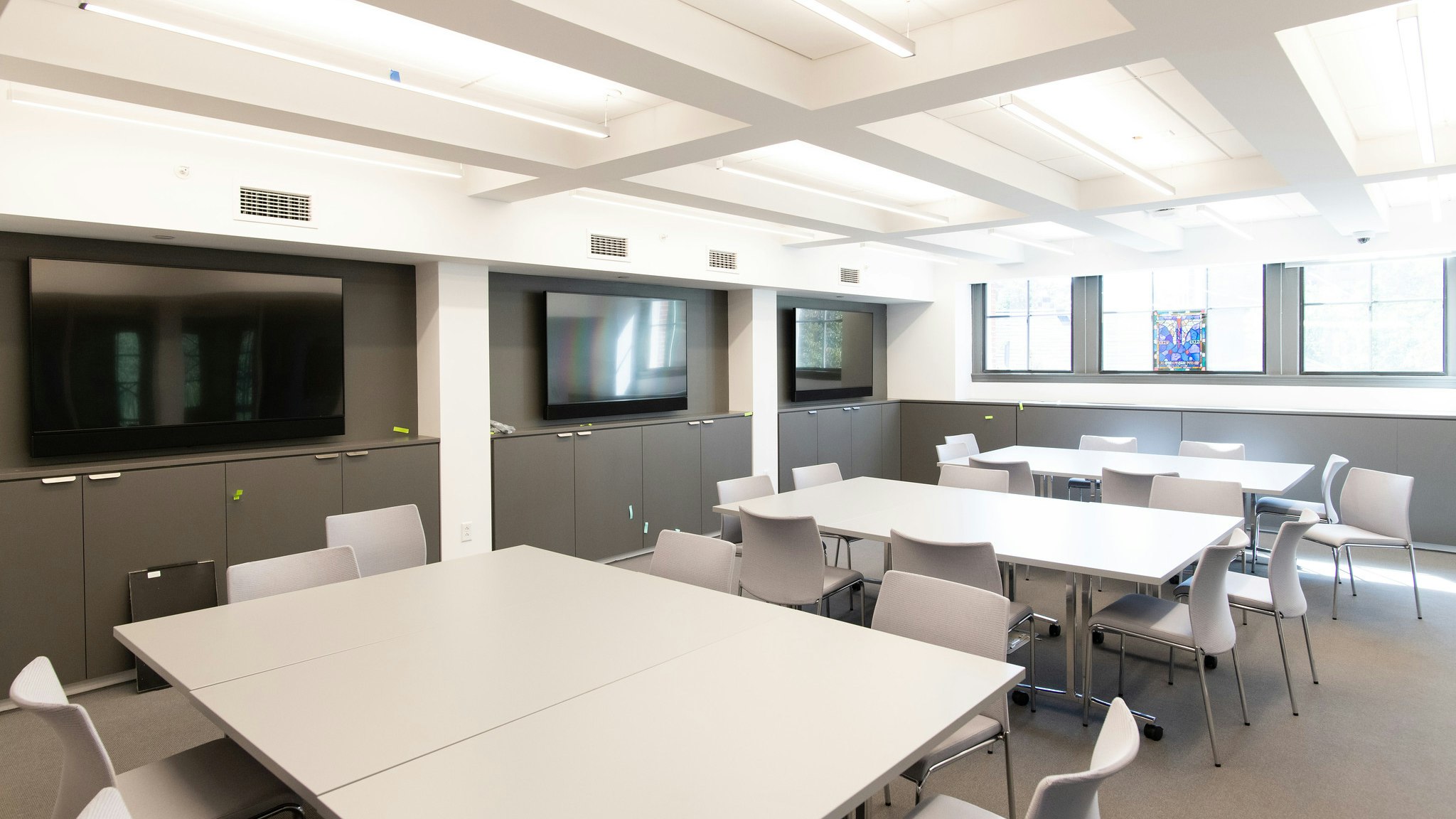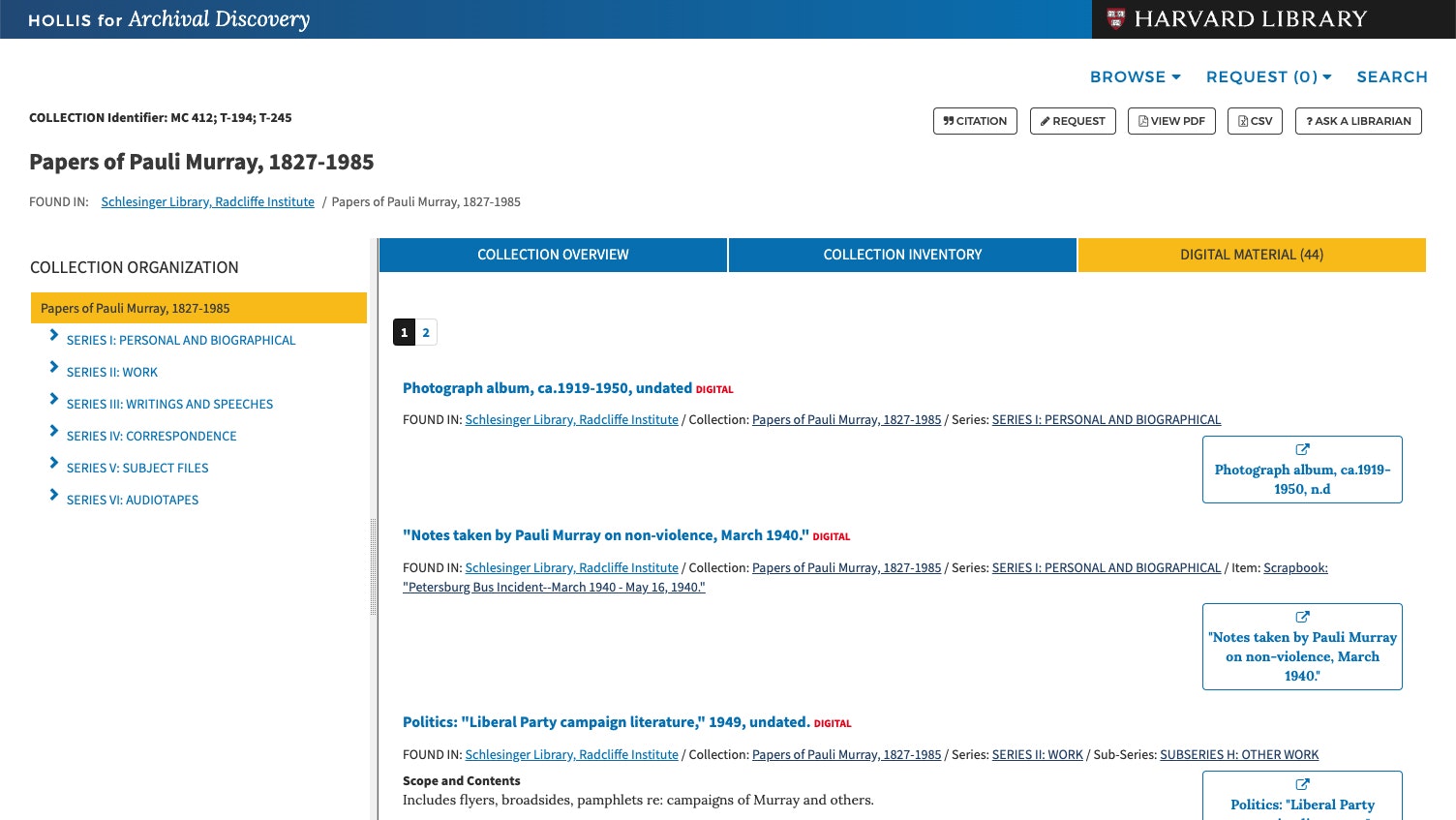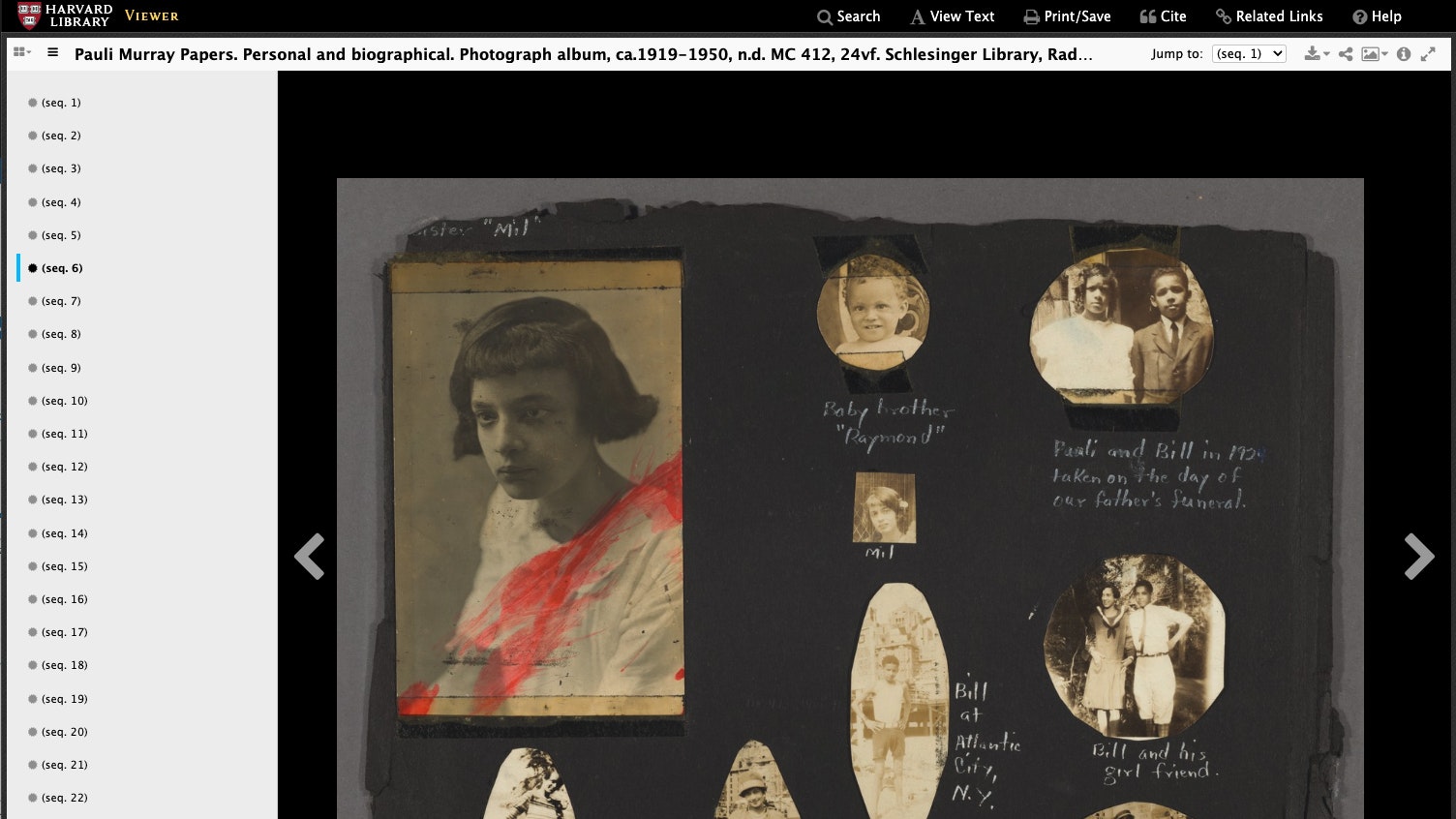Zooming the Archives

A sudden shift to digital learning challenges teaching from the Library’s collections—and offers opportunities for archival pedagogy.
In March 2020, with the spread and precautions of COVID, the shift to online learning was challenging for teachers and students nationwide. But for Durba Mitra, an assistant professor of women, gender, and sexuality in the Harvard Faculty of Arts and Sciences, it meant reinventing an entire syllabus.
Mitra, whose course on transnational feminisms met physically inside Radcliffe’s Schlesinger Library and relied heavily on its archives, was at a loss for where to begin.
To move forward, Mitra—a recent Radcliffe professor and the incoming acting director of the Schlesinger for the 2022–2023 academic year—turned to Tamar Gonen Brown, a research librarian and teaching coordinator.
“I cannot think of a better intellectual partner than Tamar,” said Mitra.
No one, staff included, was allowed physical access to the Library through the end of the spring 2020 semester, so the new curriculum had to rely entirely on previously digitized collections.
Shortly before the pandemic, the Library had made a push to digitize materials related to carceral history in the United States, and collections like the papers of Miriam Van Waters and the Friends of Framingham proved to be invaluable tools for remote learning. A portion of the Angela Davis collection had also been digitized just prior to the Library’s closure, but while good timing played a partial role in the success of virtual teaching efforts, most of the credit goes to the innovation and flexibility of the Schlesinger staff.
“In a way, when you have a tight constraint on any kind of creative assignment, it can be inspiring,” said Gonen Brown. “For example, writing in the sparse style of Ernest Hemingway—that was sort of what teaching with digitized materials felt like.”
One collection that Mitra incorporated in her virtual classroom was the Pauli Murray Papers, which include writings, correspondence, photographs, and audio recordings personally donated to the Schlesinger by the civil and women’s rights activist, a small part of which had been previously digitized.


HOLLIS for Archival Discovery has an option to view digital offerings. Here, the results for the Pauli Murray Papers (top), used by Durba MItra in her virtual classroom, and a page from the first result, Pauli Murray's photo album, ca. 1919–1950 (bottom).
On the second week of the fall 2021 semester, nearly two years after the beginning of the COVID-19 lockdown, Mitra returned to the physical seminar room, known colloquially as the classroom, with her tutorial of Women, Gender, and Sexuality Studies (WGS) concentrators to engage with a much broader assortment of not-yet-digitized archival materials, as well as a larger portion of the Murray collection.
Mitra has sought to bring each of her classes into the Schlesinger in some way, even during the pandemic, whether to look at historical documents related to course material or, as her tutorial students experienced this semester, to “dive into a box.” Here, students learn to match the box’s contents to the finding aid and understand its role in a larger collection, taking away archival research skills for their burgeoning scholarly careers.
On a larger scale, said Mitra, “I want students to understand that histories of exclusion are a part of Harvard’s past and how spaces like the Schlesinger, with its dedication to collections focused on women and sexual minorities, help us rethink that history of exclusion.”
For Gonen Brown, adapting to the pandemic has proven to be both a challenge and an opportunity. “I am so grateful for everything that I have learned from teaching remotely, and it is something that I hope to continue to do in my professional life. There are so many possibilities for expanding access to the collections.”
The virtual learning strategies discovered during the height of the pandemic have remained useful even after students returned to campus. This fall, Gonen Brown worked with one professor whose course was being taught virtually, but the students were able to make a class visit to the library in person while the professor Zoomed in on a nearby monitor.
Despite the limitations of remote learning, both Mitra and Gonen Brown were pleased with what was accomplished. They are now eager for students to take advantage of not only the archives but also the Library’s physical space.
“I think a lot about the visual cultures of Harvard and who is in the portraits on the walls,” said Mitra. “And it’s worth just looking at the portraits in the Schlesinger Library, because there has been a lot of thoughtful reflection on representation there. One of the staff told me that when students go into the reading room, they often ask to sit next to a portrait that they relate to. This space offers a different way of being in the world than I think much of the campus has, and that has been created intentionally under the direction of Jane Kamensky.”
Complementing the unique space, Mitra hopes to foster a unique academic environment for students when they visit the archives. “I think there’s a lot of value in practices of assessment, particularly for the purpose of feedback, but part of the project in a WGS classroom is to take away the premise of assessment as the reason we do intellectual work,” she explained. “I worry about students’ anxiety when it comes to feeling like they need to ask the right question. And if there’s no idea of the right question put before them, all of a sudden you can ask different questions, or you can just say it was really cool.”
Her favorite moment since returning to in-person teaching, Gonen Brown recalls, was Mitra’s announcement to her students at the beginning of their recent class.
“This isn’t graded,” she told them. “It’s just for joy.”
Iman Lavery, Harvard College Class of 2022, is a concentrator in English with a secondary in film and visual studies and a freelance writer.







